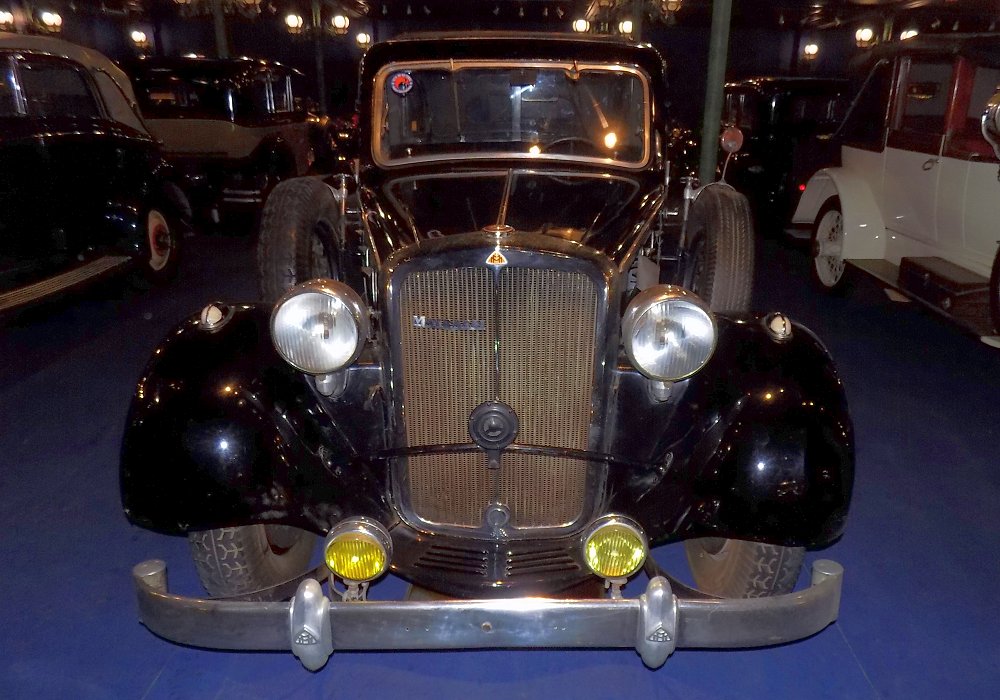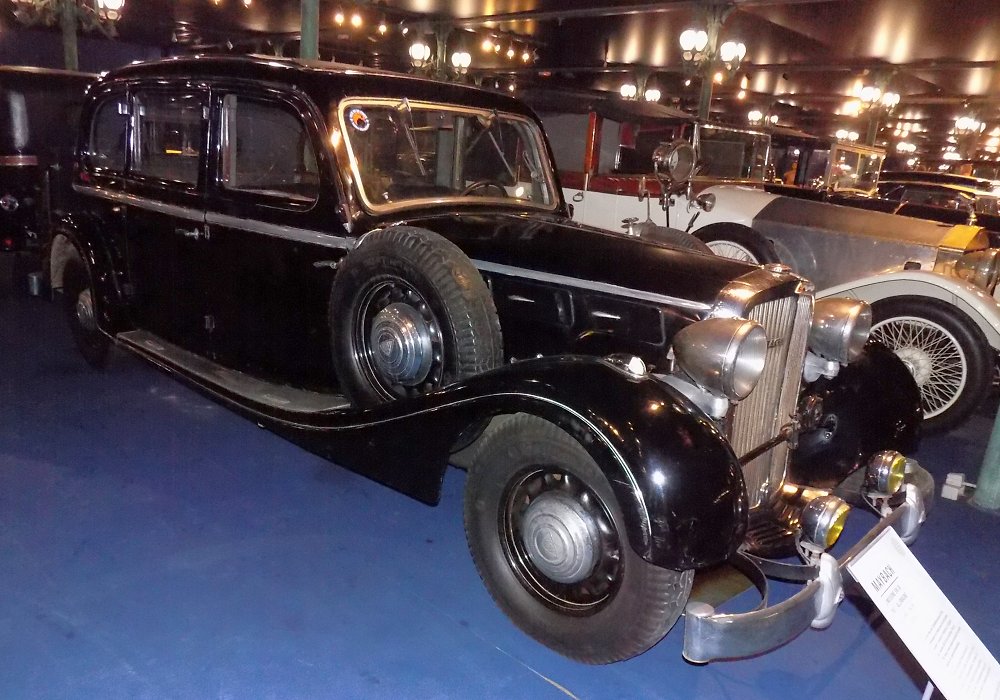Description
The Maybach SW 38 Limousine was one of the defining German luxury automobiles of the late 1930s, representing Maybach’s transition into a more modern, technically advanced era of prestige motoring. Built on the sophisticated SW-series platform introduced with the SW 35 and further refined in the SW 38, it combined advanced engineering with a formal, elegant limousine body that appealed to both owner-drivers and those who travelled with a chauffeur. Smaller and more manageable than the enormous Maybachs of the 1920s yet still imbued with the marque’s trademark refinement, the SW 38 Limousine became one of the most desirable and versatile Maybach chassis of the pre-war period.
At the heart of the SW 38 was its 3.8-litre straight-six engine, one of the finest Maybach produced before the advent of the DS “Zeppelin” series. Like its predecessor, the engine was equipped with a clutch-operated Roots-type supercharger that boosted output to around 150–160 horsepower. This combination provided exceptional smoothness, strong torque and the ability to move a large luxury body with effortless authority. The engine’s refinement came from Maybach’s background in aero-engine design, and it delivered quiet, unstrained performance even when the car was driven at higher touring speeds.
The SW 38 chassis was a technical showcase. It used Maybach’s Schwingachse system — an independent swing-axle rear suspension — matched with an independent front suspension setup. This provided ride comfort and handling far superior to the rigid-axle designs still used by many luxury rivals. The chassis was built around a heavy-duty box-section frame engineered to support the wide variety of custom coachwork that Maybach clients demanded. The long wheelbase available for limousine versions further enhanced ride suppleness and cabin space, making the car particularly well suited for formal, chauffeur-driven duties.
Transmission was one of the SW 38’s greatest strengths. Maybach equipped the car with its advanced semi-automatic preselector gearbox and torque converter, which allowed smooth, clutch-free shifting in most driving conditions. This system provided a level of refinement and ease of operation unmatched by most competitors of the era. In practice, the limousine could glide away from rest with almost no perceptible mechanical interference, a quality highly valued by wealthy passengers.
The limousine bodywork — built either by Spohn, Maybach’s preferred coachbuilder, or by other high-end ateliers of the period — was designed to emphasise dignity, comfort and formal elegance. Unlike the Pullman variants, which offered an extended, chauffeur-only configuration, the standard SW 38 Limousine maintained a somewhat more compact profile, but still possessed the upright stance, long roofline and balanced proportions expected of a luxury car in this class. The tall passenger cabin, broad doors, expansive side windows and carefully shaped fenders gave the Limousine an imposing yet refined appearance.
Inside, the SW 38 Limousine offered the same level of craftsmanship found in all Maybachs. The cabins typically featured deep armchairs or a wide rear bench upholstered in the finest leather or luxurious cloth. Interiors were trimmed with hand-polished hardwood veneers, finely machined metal controls, thick carpeting, elegantly designed door panels and an array of bespoke equipment. Amenities often included heater units, reading lamps, fold-down tables, vanity compartments, and sometimes an intercom system between driver and passengers. As with all coachbuilt Maybachs, interior details varied depending on the commissioning client, resulting in each example being a unique expression of pre-war luxury.
On the road, the SW 38 Limousine delivered the quiet, serene performance expected from a car of its stature. The supercharged straight-six engine provided consistent, effortless acceleration, while the semi-automatic transmission contributed to a smooth, undisturbed ride. The independent suspension gave the car excellent composure on imperfect road surfaces, maintaining calmness and comfort at any speed. Steering was steady rather than quick, and braking performance — delivered through large mechanical or hydraulic drums depending on specification — was strong for a vehicle of this size and era.
Production of the SW 38 series was limited, as all Maybachs of the period were hand-built luxury cars commissioned by an elite clientele. The limousine configuration was one of the more common body types, but it remained rare and expensive even by pre-war standards.
Today, the Maybach SW 38 Limousine stands as a superb example of late-1930s German luxury design and engineering. It bridges the gap between the vast, formal chauffeur cars of the 1920s and the more modern streamlined age that followed. Elegant, technically advanced and beautifully constructed, it remains one of the most impressive pre-war limousines and a testament to Maybach’s status as one of the world’s premier luxury manufacturers before the Second World War.

